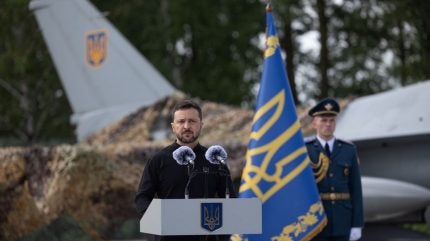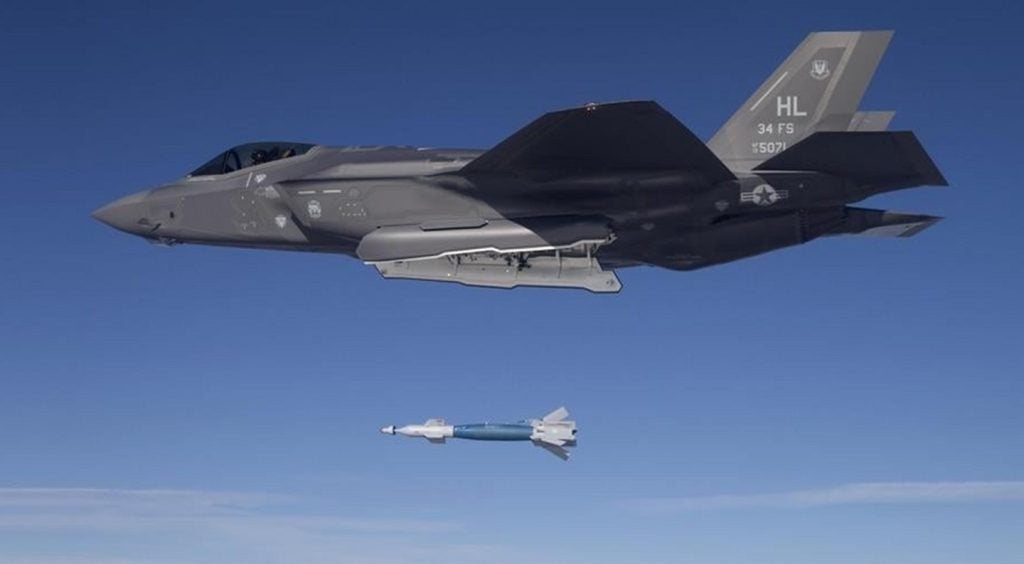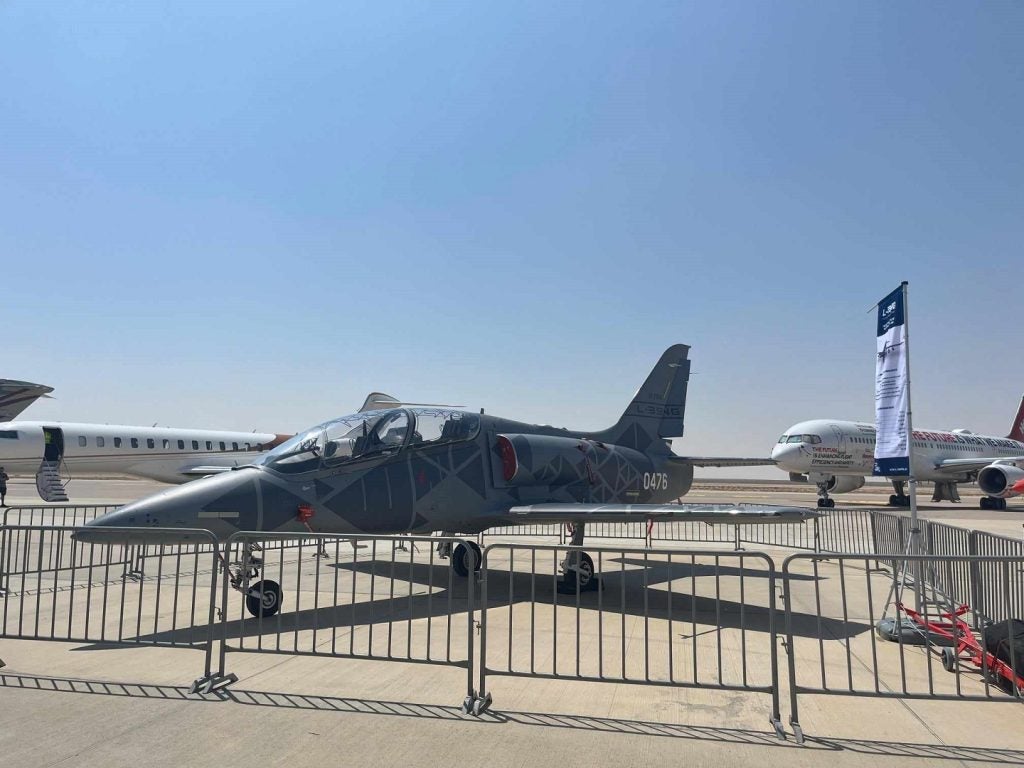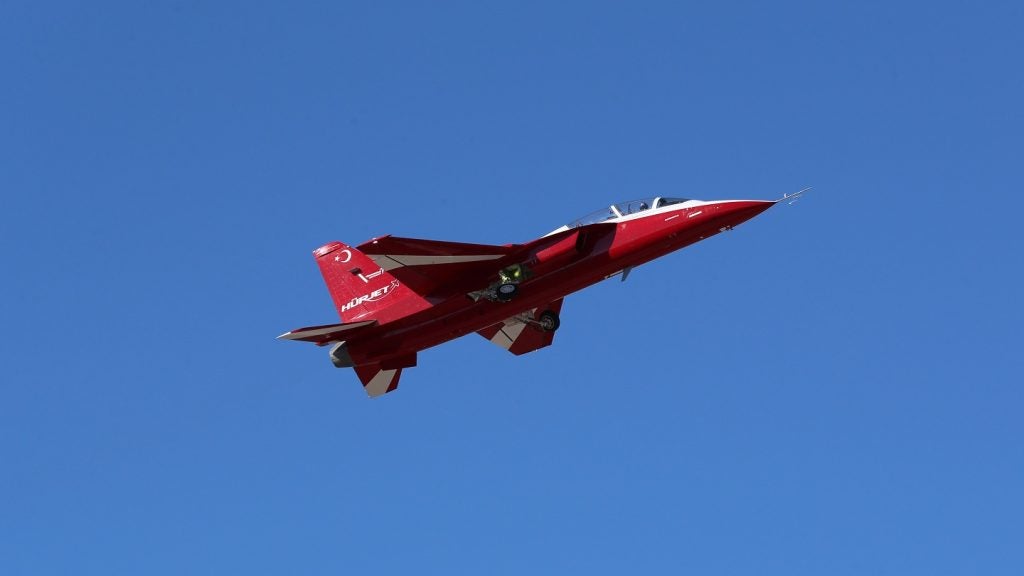
With the arrival of F-16s in Ukraine, President Zelenskyy celebrates for the Ukrainian Air Force.
However, as the country transitions to Western aviation, the question looms: can these jets tip the balance against Russia’s air capabilities?
How well do you really know your competitors?
Access the most comprehensive Company Profiles on the market, powered by GlobalData. Save hours of research. Gain competitive edge.

Thank you!
Your download email will arrive shortly
Not ready to buy yet? Download a free sample
We are confident about the unique quality of our Company Profiles. However, we want you to make the most beneficial decision for your business, so we offer a free sample that you can download by submitting the below form
By GlobalDataPresident Zelenskyy’s cautious optimism
For the first time since Russia’s invasion began, F-16 fighter jets are now in the hands of Ukrainian pilots, a milestone that President Volodymyr Zelenskyy described as a “new phase” in the country’s defence strategy. Announced during a ceremony honouring the Air Force of the Armed Forces of Ukraine, this development marks a moment in the ongoing conflict.
However, while the arrival of these aircraft signals a notable victory for Ukraine’s military diplomacy, the road ahead is fraught with uncertainty. As President Zelenskyy acknowledged, the current fleet and trained personnel still need to match the scale of the threat posed by Russia’s air force.
Since the onset of Russia’s invasion, the Ukrainian Air Force has been tasked with an uphill battle: holding off a numerically superior enemy. Ukrainian pilots have conducted over 22,000 combat missions for two and a half years. The war has illustrated the limitations of Ukraine’s ageing Soviet-era aircraft.
Transition to Western military standards
The introduction of the F-16s, alongside the existing MiG-29 and Su-27 fighters, is expected to bolster Ukraine’s defence capabilities. Yet, Zelenskyy’s speeches suggest a cautious optimism rather than outright triumphalism. He emphasised the ongoing need for additional aircraft and pilot training.
The first group of 10 Ukrainian pilots completed their initial flight training with the RAF in the UK in March of this year. This training included basic flight instruction, ground school, and English lessons.
The F-16s represent a technological upgrade and a pivot towards Western military standards. This shift comes after negotiations with international partners, whom Zelenskyy credited for turning what was once “impossible” into reality.
Countries like Denmark, the Netherlands, and the United States have made these deliveries possible. The Netherlands has pledged an additional €300m ($327m) for F-16 ammunition, enhancing its earlier commitment of €150m.
In light of a recent Joint Air-to-Surface Standoff Missiles with Extended Range (JASSM-ER) deal with the US, this contract for the Netherlands replaced the donation of the same missiles to Ukraine. Concurrently, Norway has committed to sending six surplus F-16s to Ukraine by the end of 2024.
However, the broader coalition Zelensky envisions, particularly one that could extend to neighbouring Nato countries, reflects a deeper concern about Ukraine’s air defence’s long-term sustainability.
Calls for expanded coalition and additional support
A point of tension remains the capability gap between Ukraine and Russia. While the F-16s provide a much-needed boost, Ukraine’s air force still faces challenges. The fleet needs to be larger to cover all Ukrainian skies, and its pilots are still adapting to the complexities of operating this new technology. Additionally, the logistical and operational integration of these jets into Ukraine’s existing military framework is a process that cannot be rushed.
In the build-up to this delivery, Russian airstrikes intensified against Ukrainian airfields, mainly targeting sites anticipated to house the F-16 fighter jets. The city of Starokostiantyniv, a key airbase location, was heavily bombarded.
Beyond the technical and strategic hurdles, there is the overarching question of whether this new phase of Ukraine’s air force can genuinely alter the dynamics of the war. Russia’s air capabilities, bolstered by missile systems and a robust fleet, remain challenging.
Zelenskyy also calls for a “small coalition” of neighbouring countries to help shoot down Russian missiles. While Ukraine’s air defence has made strides, its newfound air capabilities may be stretched thin without a broader international effort.
Despite significant contributions, including recent pledges from Germany, Romania, and the US, Ukraine’s President Volodymyr Zelenskyy has called for 25 Patriot systems to defend against aerial threats effectively. Western nations have provided or pledged seven Patriot batteries, falling short of Ukraine’s target.
In the end, the F-16s flying over Ukraine embody a nation’s resolve to defend its skies. But as the conflict drags on, the question lingers: Can they truly secure a lasting peace?








